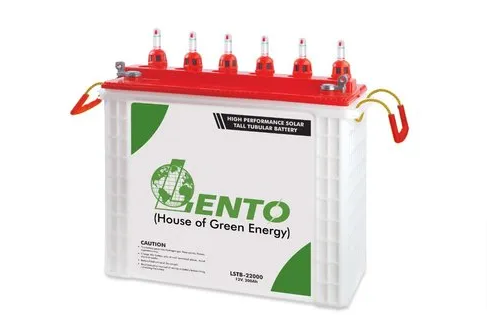Why Does a Car Battery Go Flat If It Is Not Used Often?

Why Does a Car Battery Go Flat If It Is Not Used Often?
Understanding Self‑Discharge, Parasitic Drains, and Lento’s Low‑Maintenance Solutions
A car battery left unused can lose charge and go flat—even in just a few weeks. The main culprits are self‑discharge, parasitic electrical drains, and sulfation. Lento’s Sealed Maintenance‑Free (SMF/VRLA) batteries feature advanced Alloy‑AGM construction with a self‑discharge rate of under 1 % per week and corrosion‑resistant plates to combat these issues. This guide explains why batteries go flat when idle, steps to prevent it, and how Lento’s products help distributors and fleet managers keep vehicles ready to run.
1. Self‑Discharge: The Natural Drain
All lead‑acid batteries, including automotive types, undergo a slow chemical reaction that drains charge over time—called self‑discharge.
- Rate of Self‑Discharge
- Standard flooded batteries: 3–5 % per week
- Lento AGM/SMF batteries: < 1 % per week
- Impact in Storage
A battery at 80 % State of Charge (SoC) can fall to 50 % or lower within six weeks if not recharged—often too low for reliable starts.
2. Parasitic Drains: “Silent” Electrical Loads
Even with the ignition off, modern cars draw small currents to power clocks, alarms, keyless‑entry modules, and on‑board computers.
- Typical Parasitic Draw: 20–50 mA
- Monthly Drain: 20 mA × 30 days ≈ 14 Ah lost
- Effect: A 60 Ah battery can drop by 20 % SoC in one month
Lento Tip for Fleets: Install a switchable fused disconnect or smart standby relay to cut parasitic drains during long idle periods.
3. Sulfation: Crystals That Harden Plates
When left discharged, lead‑acid batteries form lead‑sulfate crystals on their plates. Over time these crystals harden—a process called sulfation—reducing capacity and making recharge difficult.
- Preventive Measure: Keep SoC above 50 % and recharge fully within two weeks of use.
- Lento Advantage: AGM separators in Lento SMF series resist sulfation by promoting uniform acid distribution.
4. Temperature Effects on Idle Batteries
High ambient heat accelerates self‑discharge and sulfation; cold slows chemical reactions, lowering cranking power.
- Optimal Storage: 10–25 °C
- Lento Operating Range: ‑20 °C to 50 °C (models LSB‑65‑12 to LSB‑200‑12)
- Best Practice: Store indoors or shaded to avoid extremes.
5. Prevention & Maintenance Strategies
5.1 Regular Charging
- Interval: Every 2–3 weeks for idle vehicles
- Charger: Use a smart, multi‑stage charger (13.8 V float) to avoid overcharge.
5.2 Battery Maintainer Devices
- Trickle Chargers: Provide 0.5–2 A to offset self‑discharge safely
- Solar Maintainers: Small solar panels with integrated regulators—ideal for remote storage.
5.3 Periodic Load Testing
- Purpose: Identify weakened batteries before they fail
- Frequency: Every 6 months for fleet vehicles
5.4 Proper Storage & Isolation
- Disconnect: Remove negative clamp or use a fused master switch.
- Ventilation: Avoid sealed garages; gases need to dissipate safely.
6. How Lento Batteries Help
Lento’s SMF/VRLA automotive batteries are designed for low‑use scenarios:
- Low Self‑Discharge: < 1 % per week keeps vehicles ready after months of storage.
- AGM Technology: Eliminates watering and reduces sulfation risk.
- Corrosion‑Resistant Alloy Plates: Withstand idle periods without capacity loss.
- Sealed Design: No acid leaks, safe mounting, and less maintenance downtime.
7. Distributor & Fleet Manager Actions
- Offer Maintenance Plans: Bundle Lento batteries with trickle‑charger rentals and bi‑annual testing.
- Educate Clients: Provide quick guides on battery care during seasonal storage.
- Volume Discounts: Encourage inventory rotation and proactive replacement to prevent roadside failures.
8. Frequently Asked Questions (FAQs)
- How long can a Lento SMF battery sit unused before it goes flat?
With <1 % weekly self‑discharge, a fully charged Lento SMF battery retains over 80 % SoC for two months in moderate temperatures. - What is a parasitic drain and how can I measure it?
Parasitic drain is the current drawn by vehicle electronics when off. Use a multimeter in series with the negative cable; anything over 50 mA warrants investigation. - Can sulfation be reversed?
Mild sulfation can be reduced by slow, controlled charging (equalization). Severe sulfation often requires battery replacement. - Do I need a special charger for Lento SMF batteries?
Use any quality multi‑stage charger set to AGM/VRLA mode (float at 13.5–13.62 V). Avoid constant‑voltage chargers without float stage. - Is disconnecting the battery clamp enough to stop drains?
Yes, removing the negative clamp cuts all loads. A master switch or isolation relay offers easier on/off control without wear on terminals. - How does temperature affect idle battery life?
High heat speeds up self‑discharge and chemical degradation; cold reduces available power for starting. Store batteries in 10–25 °C where possible. - Can solar maintainers fully replace grid chargers?
For long‑term storage in sunny areas, small solar maintainers effectively offset self‑discharge, but grid chargers are recommended in low‑sun or winter months. - What warranty does Lento provide for SMF automotive batteries?
Lento SMF models carry a 24‑month warranty covering manufacturing defects and capacity loss below 80 % in rated cycles.

